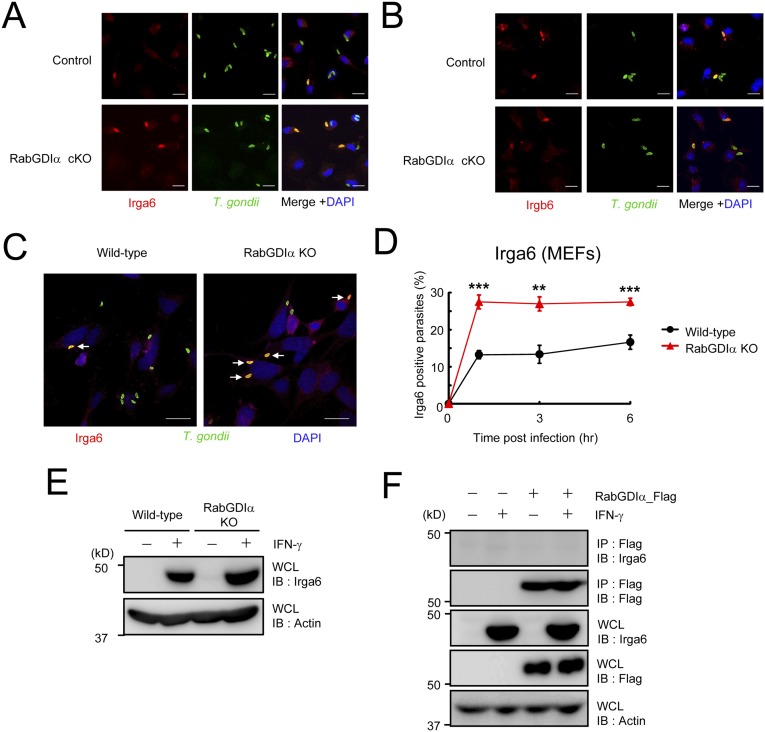Fig. S7.
Increased loading of Irga6, but not of Irgb6, in RabGDIα-deficient cells albeit no interaction between Irga6 and RabGDIα. (A and B) IFN-γ–stimulated control and RabGDIα-deficient macrophages were infected with ME49 T. gondii (moi = 0.5), fixed at 3 h postinfection, and incubated with rabbit anti-T. gondii (green) and mouse anti-Irga6 (red in A) or goat anti-Irgb6 (red in B). (Scale bars: 10 μm.) The merged images are shown in Fig. 3 B and C. (C) WT or RabGDIα-deficient MEFs treated with IFN-γ were infected with ME49 T. gondii (moi = 4), fixed at 3 h postinfection, and incubated with rabbit anti-T. gondii (green), mouse anti-Irga6 (red), and DAPI (blue). (Scale bars: 10 μm.) Arrows indicate colocalization of Irga6 with T. gondii. (D) The percentage of parasites positive for Irga6 staining at the indicated points postinfection in IFN-γ–stimulated WT or RabGDIα-deficient MEFs. Data are mean ± SD of triplicates. (E) Peritoneal macrophages untreated or treated with IFN-γ were lysed and detected by Western blot with the indicated antibodies. (F) RabGDIα-deficient MEFs were stably transfected with empty or RabGDIα expression plasmids, untreated or treated with IFN-γ, and lysed. The lysates were immunoprecipitated with anti-Flag and detected by protein immunoblot with the indicated antibodies. **P < 0.01, ***P < 0.001. Data are representative of two independent experiments (A–C, E, and F). Data in D are pooled from three independent experiments, in which almost 150 cells at each time point were counted.

